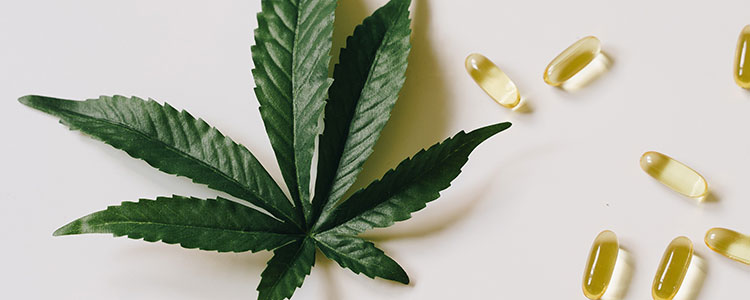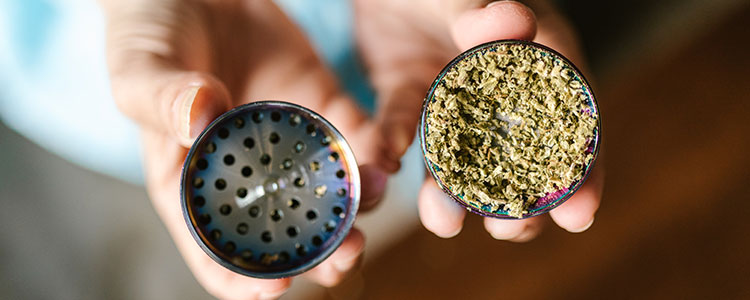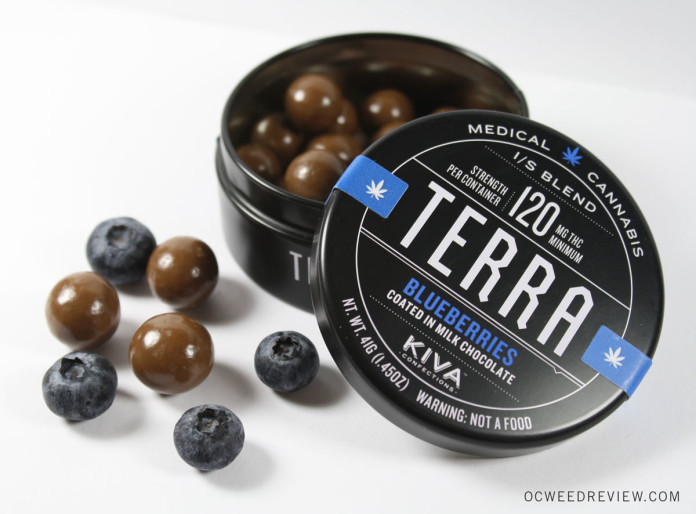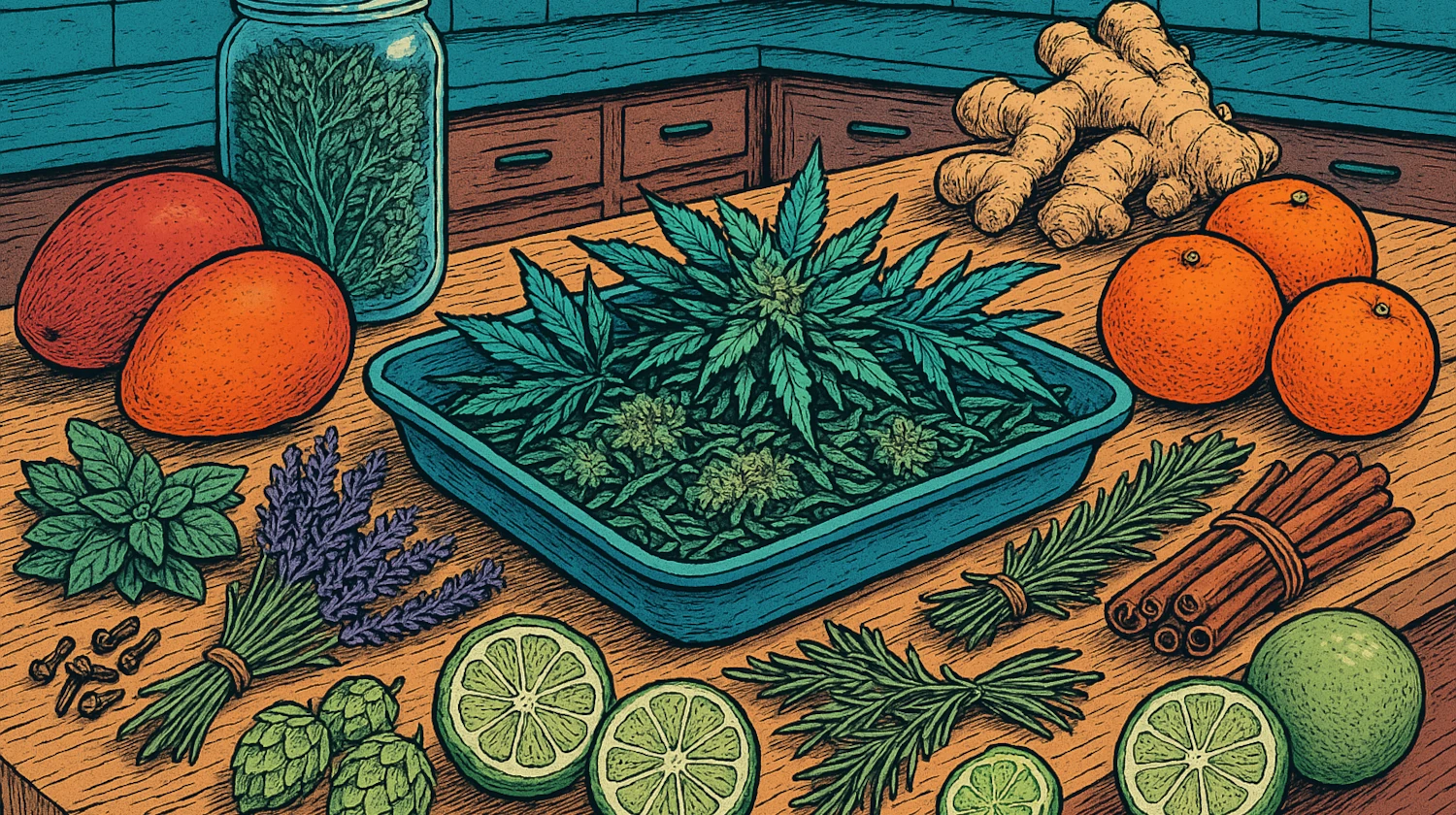Although cannabis is commonly used for medicinal purposes, not all consumers enjoy smoking flower. There are many reasons why people may not want to inhale the smoke to reap the recreational and medicinal benefits of cannabis – prepping for surgery, lung sensitivity, not wanting to cause a noticeable odor, or simply just personal preference.
Smoking flower is the most traditional cannabis consumption method, but there are other ways you can get the desired effects from cannabis.
This article will explore alternative consumption methods – including vapes, edibles, concentrates, tinctures, and capsules – to better understand their pros and cons and when they might work for you.

Fall asleep faster and wake up feeling more rested with our comprehensive (and completely free) patient’s guide to medical cannabis for sleep troubles.
1. Vapes
Vapes, or vaporizers, are electronic devices that heat the cannabis product to produce smoke or vapor that is to be inhaled. Most vapes are handheld and easy to use, making them highly personal and portable. More elaborate tabletop machines offer a less portable alternative and can make great centerpieces for group sessions.
Depending on the type of vaporizer, consumers can use either dry flower or concentrate. Some vapes heat cannabis material through combustion, where heat directly touches the material and produces the smoke – this is how it works with pre-rolls or bowls as well. More commonly, vapes use a method called convective heating, which heats the air around the product or through a coil. This method produces vapor instead of smoke, which many consumers believe offers a “healthier” alternative to smoking, although further research is still needed to confirm if this is the case.
Personal preference will play a role in which device you choose.
Pros
- Less smell. Depending on the type of material you’re smoking, the smell produced by vaporizers can be drastically less pungent than that of traditional smoke.
- Discrete. Handheld vapes can easily be placed in a bag or pocket for easy access.
- Potency. Vapes more commonly use concentrates like distillate, live resin, or solventless rosin. These materials are extracted to produce high-potency products. Less material is needed to achieve more intense effects.
- Less irritating to the lungs. Although vaping has not been proven to be a safer alternative to smoking, some users report less irritation and coughing.
Cons
- Price. Depending on the brand, vape batteries, and cartridges can be comparable in price to smoking flowers. But higher-quality vapes usually increase the cost (and value).
- Variety. Some battery and cartridge options are proprietary to the brand, which can sometimes reduce available strain selection.
- Durability. Some vape devices can be sensitive, easy to break, and expensive to repair.
- You are still inhaling. Some users still experience throat or lung irritation with vapes.
2. Edibles

Edibles are cannabis-infused foods and beverages. Almost anything that can be eaten – gummies, cookies, chocolates, crackers, sauces, sodas, and teas – can be enriched with cannabinoids through concentrates or infused oils. Sometimes, tinctures and capsules will fall into the edible category (but we will discuss those separately later in the article).
The cannabinoids in edibles are absorbed and processed through the stomach and liver to deliver the desired effects. This process is slower than smoking, taking up to 2 hours before a person may feel the effects. For some consumers, edibles can cause a more intense experience than smoking.
Pros
- Variety. If you have access to a dispensary, you will most likely find a wide selection of edibles.
- No smoke. Just a treat.
- Potency. Edibles tend to have more pronounced effects than smoke inhalation.
- Pre-dosed. Carefully dosed edibles mean you don’t have to guess how much THC you’re consuming. (Unless you made your own homemade edibles)
- Duration. The effects of edibles can last a few hours or up to a whole day.
Cons
- Onset time. Classic edibles can take up to two hours before any effect is felt. Beverages or nano-emulsified versions of gummies have more rapid onset times.
- Sugar. Most edibles contain sugar or other ingredients you may be trying to manage or avoid.
- Potency. Most edibles come in pre-dosed options, making it more difficult for consumers with a high tolerance to get their desired amount of THC.
- Duration. Edible effects can last a few hours up to a whole day, which may be longer than some consumers want.
- Price. Store-bought edibles can get expensive if your tolerance is high.
3. Extracts
Extract is an umbrella term describing a myriad of cannabis materials extracted through different methods. Other terms used to describe extracts include concentrates or wax. The final product typically has a high concentration of cannabinoids, little to no plant matter, and can have different consistencies.
Different types of extracts are produced using different methods and starting materials. Types of concentrates include:
Concentrates can be consumed through
- Dabbing. A dab rig and heating device are needed.
- Vaping. Concentrates are what are filled into cartridges that fit onto vape batteries.
- Edibles. Most store-bought edibles are infused with cannabis concentrates.
- Smoking. Some concentrate consistencies, like cannabis oil, are easy to add to bowls or joints for a higher potency experience.
Pros
- Potency. Concentrates are made to produce strong effects.
- Flavors. Extracts produce some of the most flavorful cannabis material on the market.
- Variety. There is a wide variety of brands and types to try (not to mention strain-specific extracts and cartridges).
Cons
- Price: Quality extracts and concentrates can cost upwards of $50 per gram, depending on your state and the type of extract or concentrate sought.
- Potency. For new consumers or users looking for lighter effects, concentrates may prove to be too intense.
- Duration. Frequent concentrate consumers may see an increase in tolerance, which can reduce the strength and duration of the effects and increase the amount needed.
- It may require smoking. Unless you’re consuming concentrates through edibles, some form of smoking or vaping is involved.
4. Tinctures

Tinctures are liquid drops infused with cannabis. They can be oil-based, most commonly available in dispensaries, or alcohol-based, which are typically made at home. Tinctures are an excellent non-smoking alternative for consumers who want to receive the benefits of cannabis material without the risk of throat or lung irritation.
Tinctures can be administered sublingually—placed under the tongue and held for 15-30 seconds—for faster effects. Alternatively, they can be applied topically or mixed into food, though these methods can alter the uptake time and may strengthen or diminish the desired effects.
Pros
- Potent. Tinctures can be rich in all cannabinoids or isolated to just one, allowing for a more intense effect.
- Variety. Tinctures are available in many different ratios, giving consumers a wide range of options.
- Precise dosing. Measured droppers make it easy to get the perfect dose for you.
- No smoke.
- No sugar.
- No extra tools are needed.
- Long shelf-life. Depending on the ingredients, oil-based tinctures are typically good between 2-6 years.
Cons
- Price point. Store-bought tinctures tend to include more cannabinoids per package, which can increase the price. The average tincture can cost up to $60 or more depending on the dosage and dominant cannabinoid.
- Taste. Tinctures are not the most flavorful option, which can deter some people looking for a more traditional edible experience.
5. THC Pills

Cannabis pills are ingestable capsules or tablets filled with concentrate or other cannabis material. They are simple: place the capsule in your mouth and swallow with water. The effects' onset and duration are similar to those of edibles: up to 2 hours to take effect and can last from 2 to 8 hours.
Pros
- Ease of consumption.
- Precise dosing. Each pill will provide the same milligrams of THC or CBD each time.
- Simple ingredients. No sugars are involved.
- Discreet.
- No extra tools are needed.
- No smoke.
Cons
- Price. Like tinctures, capsules can cost up to $50 or more.
- Low variety. The similarities to vitamins or medicine – and the lack of flavor – have made capsules one of the least popular ways to consume recreationally. As a result, there may be a limited number of brands and ratios from which to select. For medical cannabis patients, however, this simple and unvaried approach can make it easier to get the accurate, consistent dose needed.
Smoking vs. Edibles

Edibles are the most common way to consume cannabis without smoking. They come in a wide variety of options to suit each individual's personal preferences. Today’s recreational market provides edibles in isolated and ratioed cannabinoid options, infused with different types of concentrates and some even enhanced with terpenes or other functional ingredients, like melatonin for sleep.
Edibles require no heat or extra materials to consume and are cannabis fragrance-free. Compared to smoking, edibles have a longer onset time and longer duration of effects. While you may wait longer to feel the effects of the cannabinoids, the desired results should also last longer.
People with lung or breathing problems may benefit from consuming edibles versus smoking weed.
Vaping vs Smoking

Smoking and vaping can both be effective ways of achieving your desired effects from cannabis. And the one you choose will highly depend on your personal preference and accessibility to products.
It is currently inconclusive as to whether or not inhaling vapor is a healthier alternative than inhaling smoke. Both involve heating cannabis material that produces foreign particles entering the lungs, which isn’t ideal if you have lung or throat sensitivity or health concerns. Both consumption methods have almost instantaneous effects that last an hour or two and are relatively user-friendly.
Vaping tends to produce more potent effects than traditional smoking. It can also be more discreet and produce less pungent aromas. Vaping can cost more than smoking, however, requiring more expensive equipment and materials that can be consumed more rapidly or broken more easily. Common portable vapes are incredibly convenient and portable, while pre-rolled joints offer a similarly convenient smoking method.
Tincture vs. Edible

Deciding whether to choose edibles or tinctures will depend on your preference and the products available. Both tinctures and edible products should be available in most retail or medical cannabis dispensaries. Likewise, both can easily be made at home. Both modes of consumption offer a wide range of cannabinoids that can be consumed without the harmful effects of inhaling smoke.
Edibles offer precise doses in an assortment of flavors. Infused foods and beverages can be a much less intimidating way to consume cannabis while also delivering potent effects that last for hours (this can be a pro or a con, depending on the individual). Edibles are the most common way to find cannabis in stores after traditional dry flowers. The variety of options usually means there is a wide range of price points to fit your budget.
Edibles can be made with many different ingredients, which may limit your options if you have any dietary restrictions. Waiting for the effects to kick in is also a downside for many consumers, especially newcomers who may grow impatient and take extra doses (only to feel too high when the effects reach full strength).
Tinctures are made with minimal ingredients, allowing consumers to get an exact dosage tailored to their needs. The onset time for the effects of tinctures is much quicker at 15-30 minutes, lasting for 6-8 hours.
Conclusion
Whether it’s a matter of preference or concerns about the potential health risks, smoking isn’t for everyone. Thankfully, options like vaping, edibles, tinctures, and capsules ensure you can find a smoke-free method that fits your preferences and lifestyle.
The information in this article and any included images or charts are for educational purposes only. This information is neither a substitute for, nor does it replace, professional legal advice or medical advice, diagnosis, or treatment. If you have any concerns or questions about laws, regulations, or your health, you should always consult with an attorney, physician or other licensed professional.




